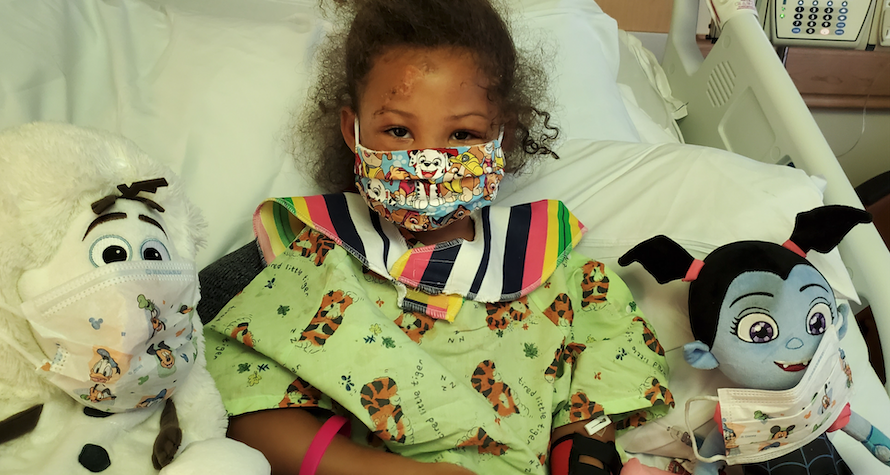Encouraging kids to wear a face mask

We understand it can be a difficult adjustment for kids to wear a face mask. Evidence suggests that face coverings slow the spread of the virus and help people who may have the virus and do not know it from transmitting it to others – but please note that the CDC recommends that children under the age of two should not wear face coverings.
Many kids might not have seen many others wear a mask in public, so Ashley Rapske and Jenna Cook, certified Child Life Specialists at Kentucky Children’s Hospital, put together these tips to help:
- Kids will react differently depending on their age. Use developmentally appropriate language, be honest and use simple words. Explain what a face mask is, why we need them, and when we need to wear them.
- Allow your child to ask questions. Keep an open dialogue. Ask them what they already know about the coronavirus and wearing a mask. Validate their feelings and be an active listener. Share your own feelings about needing to wear a mask.
- Talk about things we already do that help stop germs and keep us healthy, like washing your hands, covering your mouth when you cough and social distancing.
- Model wearing a face mask. This will help to normalize the mask and familiarize the child with what a mask looks like.
- Teach your child how to put on and take off the mask. Allow them to see themselves in the mirror when wearing a mask.
- Practice wearing the mask at home before going out in public.
- Make it part of your daily routine. Talk about how other people will also be wearing face masks. Show your child pictures of other kids, friends or family members wearing a mask.
- Learn through play. Kids often learn best through play, so put a mask on your child’s stuffed animal, action figure or doll. Pretend to be a mask-wearing doctor, animal or superhero. Draw, color or write a story about people wearing face masks.
- Offer choices. Kids do well when they feel as if they are in control, so let your child pick out their favorite color, pattern or character to put on their mask. You could also use fabric markers, paint or stickers to decorate and personalize their mask.
- Give them time. It may take patience and practice as your child adjusts to wearing a mask. Accept and comfort your child’s reactions, and provide positive encouragement, emotional support and lots of praise.
- Engage in fun and normal play activities. This will help your child express their feelings, learn, reduce stress, support developmental growth and better cope with change. Play is the work of a child!
Know that a face mask may bother the back of your child’s ears. An easy solution for this is attaching two buttons to a hat, head band or ribbon. Put the mask straps over the buttons rather than over the ears. A pipe cleaner also works well to hold the mask on the back of the head.




